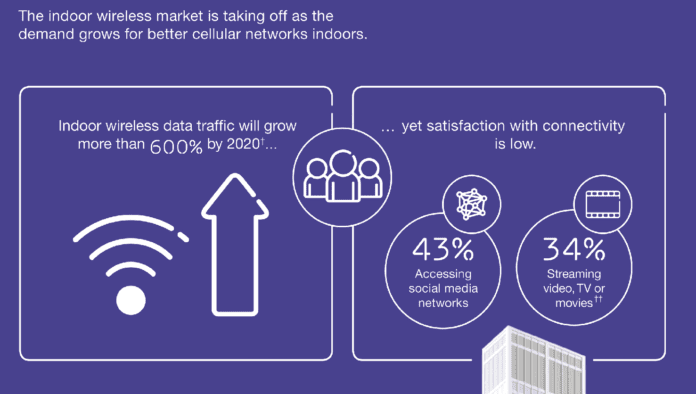Multi-operator small cell can support four carriers
Network infrastructure vendors are all looking for ways to take the cost out of distributed antenna systems to open up the vast–and underserved–market of enterprises that need in-building cellular connectivity. The approaches are essentially a re-architecture of DAS, using a small cell as the signal source for a DAS or providing multi-operator support in small cells.
With a trio of new products, Ericsson seems to be taking the latter approach. Building on its Radio Dot small cell unit, Ericsson this week unveiled it’s Multi-Operator Dot, Multi-Dot Enclosure and Strand-Mount Unit.
The company bills the multi-operator small cells as combining the “benefits of an active DAS solution with the coverage and capacity of the Radio Dot System.” The enclosure serves to minimize the visual impact of a deployment, and the strand-mount is meant for outdoor radio concealment on “existing aerial cables.”
Nishant Batra, Head of Product Area Network Infrastructure, said the new offerings will help support 5G and the internet of things. “With the Multi-Operator Dot and the Multi-Dot Enclosure, our customers can enhance the in-building user experience with excellent connectivity for both smartphones and IoT devices. The Strand-Mount Unit for outdoor micro radios, meanwhile, facilitates the dense deployments that will be required for 5G–enabling operators to deploy small cells in areas where they may not have been able to do so previously.”
In addition to its infrastructure offerings, Ericsson also sells small-cell-as-a-service, which Head of the Network-as-a-Service group Patrick Jakobson expects to gain momentum as enterprises and industries leverage new spectrum to stand up private LTE networks.
“We include everything from building the network, designing, operating and optimizing and doing that over a long-term service agreement where Ericsson is also providing the technology,” Jakobson explained. “Ericsson takes financial responsibility. We are actually the one that is sourcing and procuring the technology needed and doing all the services that are needed. From a customer perspective, they are trying to achieve excellent connectivity so they can give their fans an excellent digital experience. It’s a different business model compared to Ericsson’s traditional business. Here we are typically working with the commercial side. It’s really simplifying the process.”

